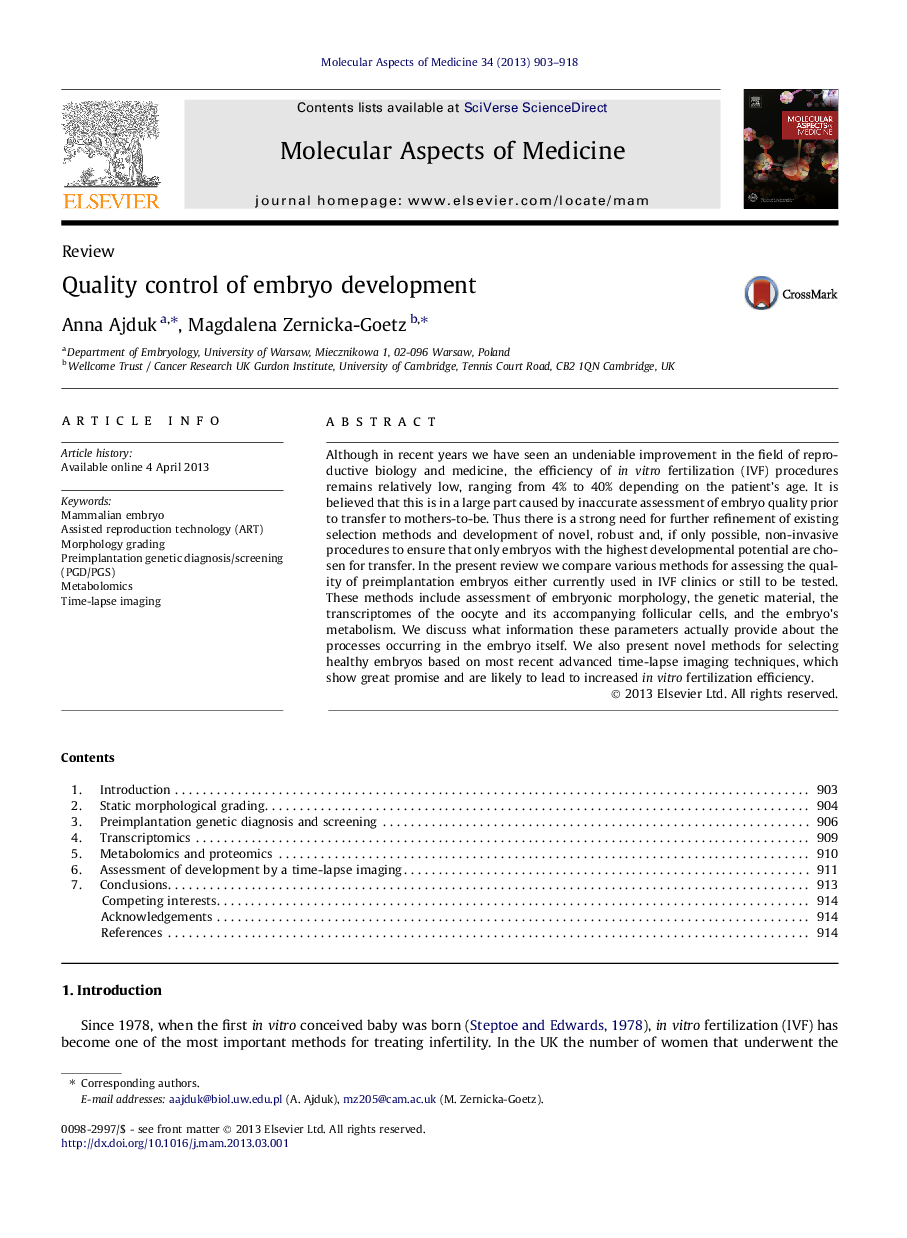| Article ID | Journal | Published Year | Pages | File Type |
|---|---|---|---|---|
| 1995731 | Molecular Aspects of Medicine | 2013 | 16 Pages |
Although in recent years we have seen an undeniable improvement in the field of reproductive biology and medicine, the efficiency of in vitro fertilization (IVF) procedures remains relatively low, ranging from 4% to 40% depending on the patient’s age. It is believed that this is in a large part caused by inaccurate assessment of embryo quality prior to transfer to mothers-to-be. Thus there is a strong need for further refinement of existing selection methods and development of novel, robust and, if only possible, non-invasive procedures to ensure that only embryos with the highest developmental potential are chosen for transfer. In the present review we compare various methods for assessing the quality of preimplantation embryos either currently used in IVF clinics or still to be tested. These methods include assessment of embryonic morphology, the genetic material, the transcriptomes of the oocyte and its accompanying follicular cells, and the embryo’s metabolism. We discuss what information these parameters actually provide about the processes occurring in the embryo itself. We also present novel methods for selecting healthy embryos based on most recent advanced time-lapse imaging techniques, which show great promise and are likely to lead to increased in vitro fertilization efficiency.
